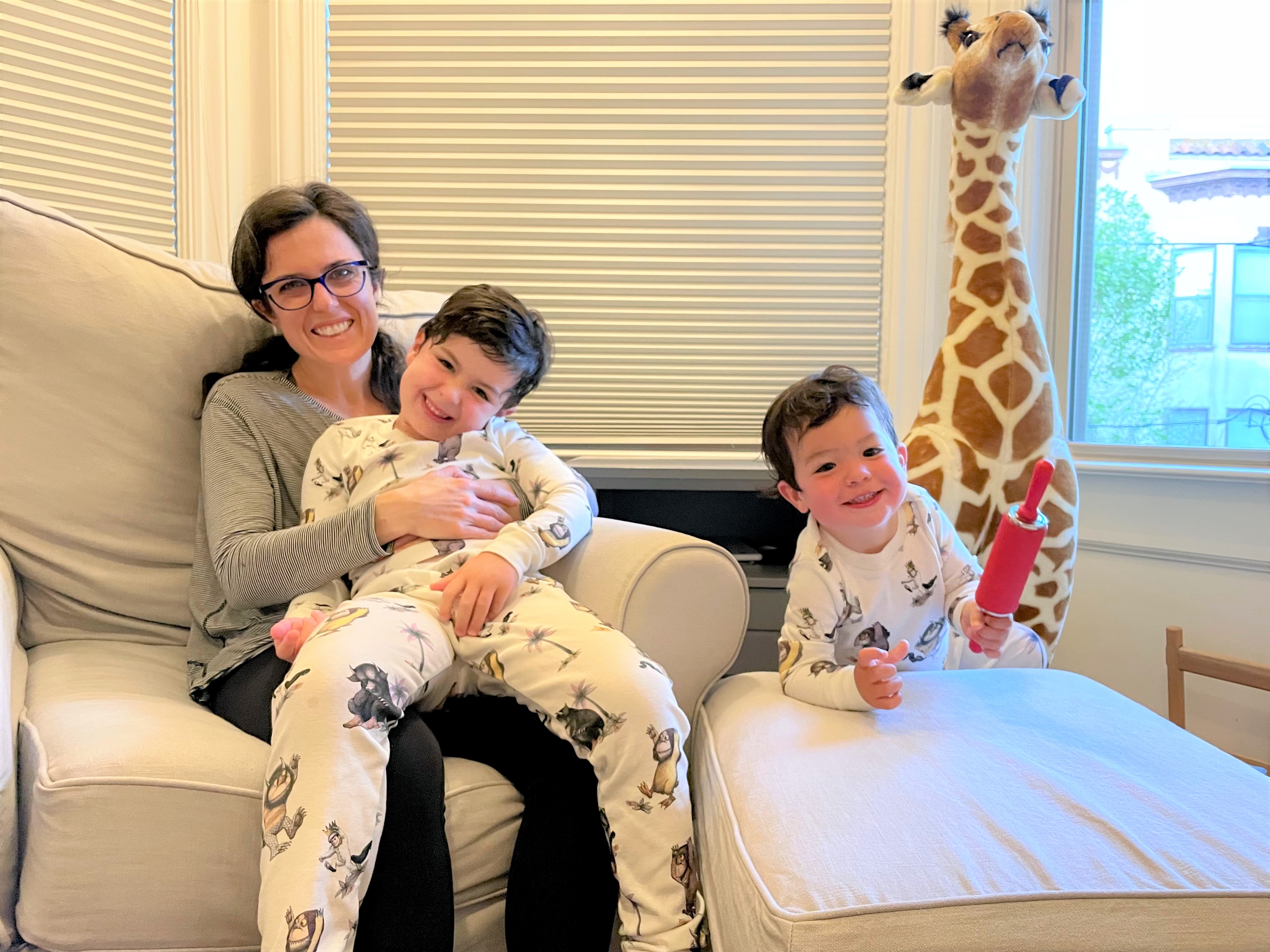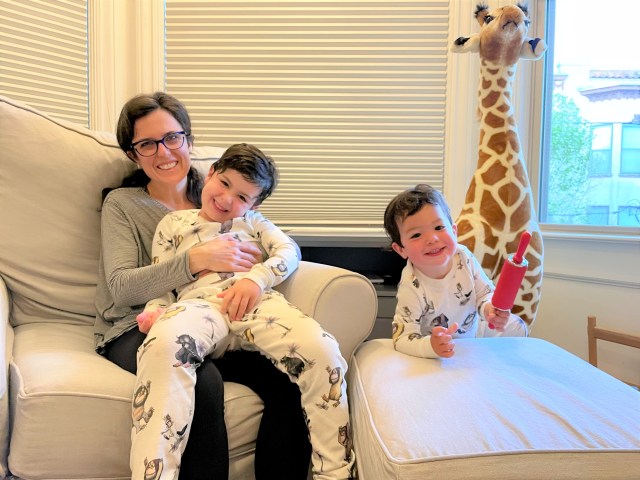
Like many families, we are an English-speaking household trying to incorporate a second language (for us, Spanish) into our lives. Our boys get the majority of their Spanish exposure through immersion school. But I know that building on that and reinforcing it at home is critical too. As a Spanish beginner myself, I cannot practice popular methods like OPOL (one parent one language), so, I came up with 5 actionable things I could do at home. They’re not fancy or complicated; they’re short and approachable enough, so I can do them consistently, which is the most important thing!
1. Speak: Add choiceful vocabulary into our everyday routine.
Time: n/a [Just replacing some English vocabulary we use]
Since I’m a beginner too, I try to learn some new vocabulary words that I can easily use with my kids on a daily basis (e.g. using agua, leche, pan during mealtime instead of water, milk, bread) The two books we ‘go to’ most for this are our In My Home & Foodie Friends books. For example, they are really into brushing their teeth right now (thanks to a new flavor of toothpaste) so we’re adding words like el cepillo de dientes, la pasta de dientes, el hilo dental (toothbrush, toothpaste, floss) to our daily rotation. These are words that get repeated multiple times a day.
2. Sing: Spanish songs everyday on our walk to school.
Time: 5 minutes daily [as a fun habit, practice each morning at a specific habitual time]
Each morning, we have a short walk to drop my boys off at school. I picked a few easy Spanish songs that have a lot of repetition, and I plan to sing those with my boys as we walk. For example, ¡Colores, colores! is fun for practicing colors and names of different jobs; the song traditionally just talks about Dad’s jobs, but we use papá or mamá. Sometimes, we switch it up by using different family members like abuelo, abuela, tío and tía! Another song that’s fun, easy to repeat, and has great vocabulary is 10 Pececitos (10 little fish).
3. Environment: Set up their spaces to encourage using Spanish instead of English, with Spanish books and labels.
Time: 5-15 minutes [set up the environment to replace English options with Spanish], more environmental to encourage them to pick up independently
We have a great reading nook, and my kids love curling up with them in a big comfy chair for story time. We intentionally place our Habbi Habbi collection nearby—both the Spanish-English and Chinese-English, with a Wand for each child. We try to keep them in places that are visible and accessible to the kids (e.g. a low shelf), and encourage them to choose them for story time and independent play. We also rotate titles or display more prominently titles that we want to “lightly suggest” they look at.
We have also decorated our home environment with Spanish signs and labels. Most recently, we used the Habbi Habbi “In My Home” Printable Flashcard Set to color, cut, and tape them to everyday household objects. It’s a fun activity… and will remind all of us – not only the kids but me and my husband as well—to use the Spanish names for certain objects throughout the house.
4. Community: Engage and learn from Habbi Habbi Reading Club.
Time: 5 minutes daily [Overlaps with our independent reading time—and keeps me accountable to hear from other parents!]
Continuing on the Habbi Habbi theme…we are also participating in the Habbi Habbi Reading Club (virtual, on Facebook). The boys already love playing with the Wands & books “freestyle” —tapping, making up games, dancing to the music. But I also want to increase their community of Spanish speakers (and/or learners!). So, we participate in the Reading Club, which is an intimate environment for me. It encourages me and the boys to use our Spanish everyday at home (and not just at school). I also love seeing how other families use the Wand and books; it has given us some new ideas (e.g. keeping a Wand and book in the car for a little Spanish when we are on the go—even if it’s just a 5-10 minute ride!). It’s a fairly low time commitment, and we can sprinkle it in throughout the day—e.g. before bed, around mealtimes—which makes it fun and manageable.
5. Play: Utilize Printables for further tangible play and learning.
Time: Ad-hoc and great time filler [at a restaurant, when looking for an activity, etc!]
My kids are at an age where they LOVE to color and draw (the chant at breakfast this morning was “¡Más arte!”). Printables are a great way to practice Spanish, not to mention reading, writing, math and more. We love them at home or on the go. When we take the kids out to eat, I like to bring a variety of printables and crayons to keep them occupied while we wait for our food. Some of our (free!) favorites come from this set. In particular—we love this interactive math printable (we use raisins to complete the math problems, which my kids adore).
We don’t always follow the directions on the page but that means we can use the same printable in lots of different ways. For example, this vehicle printable can be used for coloring, matching, “I spy”, or even a silly “Name that truck sound” game.
—By Anne-Louise Nieto, Mom of 2 | Grew up in the US | Native English Speaker | Used to speak French | Non-Native Spanish speaker, learning Spanish with my kids in hopes of raising them bilingual!
RELATED:











